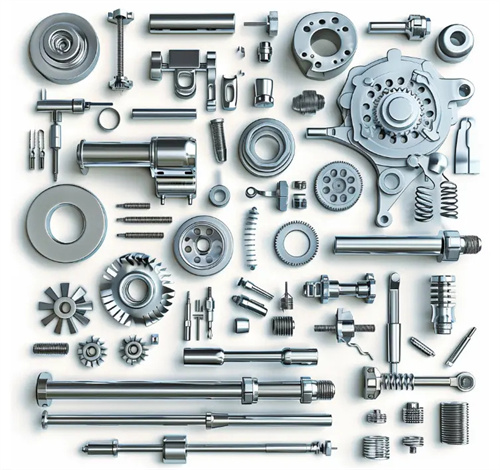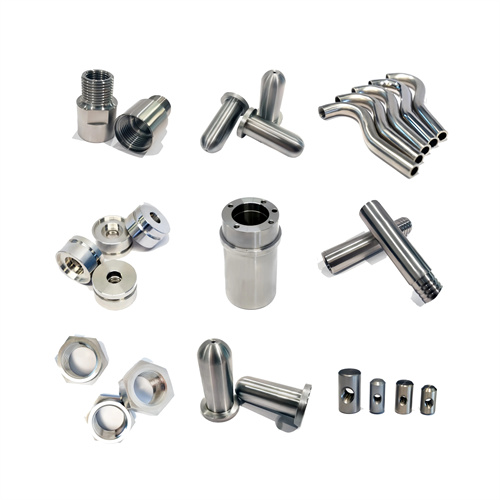Cast iron names, codes and grades
Cast iron is an iron-carbon alloy primarily composed of iron, carbon, and silicon, with a carbon content greater than 2.11%. It exhibits excellent casting and machinability, wear resistance, and shock absorption properties, making it widely used in machinery manufacturing, automotive, metallurgy, and chemical industries. Depending on the form of carbon and graphite present in the cast iron, cast iron can be classified into various types, including gray cast iron, ductile iron, malleable iron, and vermicular cast iron. Each type of cast iron has unique properties and uses. To facilitate identification and selection, national standards have standardized the names, codes, and designations of cast iron. Accurately understanding and mastering these regulations is crucial for the proper selection, processing, and quality control of cast iron.

Gray cast iron is the most widely used type of cast iron. Its carbon primarily exists in the form of flake graphite, giving it a dark gray fracture surface, hence its name. Gray cast iron offers excellent casting, machinability, and vibration damping properties, and is inexpensive. It is suitable for manufacturing parts subject to pressure and vibration, such as machine tool beds, engine blocks, and valve housings. The designation for gray cast iron is “HT,” with “H” standing for “gray” and “T” for “iron.” The grade designation consists of the designation “HT” and a minimum tensile strength value (in MPa). For example, HT200 indicates a minimum tensile strength of 200 MPa. The tensile strength of gray cast iron increases with increasing grade. Common grades include HT150, HT200, HT250, HT300, and HT350. HT150 is suitable for parts subject to light loads, while HT350 is suitable for parts subject to heavy loads and shock loads. The performance of gray cast iron is also related to the shape and distribution of graphite. The smaller and more evenly distributed the graphite flakes are, the higher its strength and hardness are.

Ductile iron is a cast iron made by adding nodularizers (such as magnesium and cerium) and inoculants (such as ferrosilicon) to gray cast iron, causing graphite to precipitate in spherical shapes. Ductile iron exhibits mechanical properties similar to those of steel, with high tensile strength, yield strength, and toughness, while retaining the excellent casting properties and wear resistance of cast iron. It is widely used in automotive parts subject to dynamic loads, such as rear axle housings, crankshafts, and gears. The code for ductile iron is “QT,” where “Q” stands for “ball” and “T” for “iron.” The grade designation consists of the code “QT,” the minimum tensile strength (in MPa), and the minimum elongation (in %), separated by a dash. For example, QT400-15 indicates a ductile iron with a minimum tensile strength of 400 MPa and a minimum elongation of 15%. Commonly used ductile iron grades include QT400-15, QT500-7, QT600-3, QT700-2, QT800-2, etc. As the tensile strength value in the grade increases, the elongation gradually decreases, the strength and hardness of the material increase, and the toughness decreases.

Malleable cast iron is obtained by graphitizing white cast iron through a graphitization annealing process, breaking down the cementite into flocculent graphite. It is also known as ductile cast iron. Although the word “malleable” is in its name, malleable cast iron cannot actually be forged. Its characteristics are high toughness and plasticity, making it suitable for manufacturing thin-walled parts with complex shapes and subjected to impact loads, such as pipe fittings, valve handles, and agricultural implement parts. Malleable cast iron can be divided into blackheart malleable cast iron and pearlitic malleable cast iron based on its chemical composition and properties. Blackheart malleable cast iron is designated “KTH,” where “K” stands for “malleable,” “T” for “iron,” and “H” for “black.” Pearlitic malleable cast iron is designated “KTZ,” where “Z” stands for “pearl.” The grade consists of a code, minimum tensile strength (in MPa) and minimum elongation (in %). For example, KTH300-06 indicates blackheart malleable cast iron with a minimum tensile strength of 300 MPa and a minimum elongation of 6%; KTZ450-06 indicates pearlite malleable cast iron with a minimum tensile strength of 450 MPa and a minimum elongation of 6%.

Compacted graphite iron (CGI) is a new type of cast iron whose graphite is vermicular, intermediate between flake and spherical graphite. It combines the excellent casting properties of gray cast iron with the higher strength of ductile iron, while also offering excellent heat and wear resistance. It is suitable for manufacturing parts such as engine cylinder heads, exhaust pipes, and hydraulic components. The code for CGI is “RuT,” where “Ru” stands for “comminuted” and “T” for “iron.” The grade designation consists of the code and a minimum tensile strength value (in MPa). For example, RuT420 indicates CGI with a minimum tensile strength of 420 MPa. Common CGI grades include RuT300, RuT340, RuT380, and RuT420. Strength and hardness increase with increasing grade designation.

The names, codes, and designations of cast iron are fundamental standards in the field of mechanical manufacturing. Correctly understanding and applying these standards is crucial for the selection, design, and manufacture of cast iron. When selecting cast iron, the appropriate type and grade should be chosen based on the part’s operating conditions, stresses, and performance requirements. For example, parts subject to impact loads should use ductile iron or malleable cast iron, parts subject to pressure and vibration should use gray cast iron, and parts requiring heat and wear resistance should use vermicular graphite iron. The cast iron grade should be clearly indicated in part drawings and technical documentation to facilitate machining and quality control by production and inspection departments. Furthermore, the differences in machining properties between different cast iron grades should be taken into account. For example, gray cast iron has excellent machinability and can be cut at higher cutting speeds, while ductile iron, due to its higher strength, requires wear-resistant tools and appropriately lower cutting speeds. By correctly understanding and applying the names, codes, and designations of cast iron, optimal cast iron material selection can be achieved, ensuring product quality and performance while reducing production costs.
